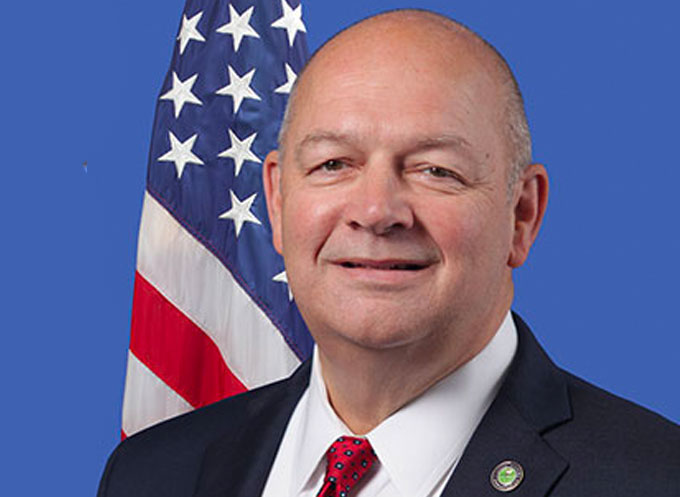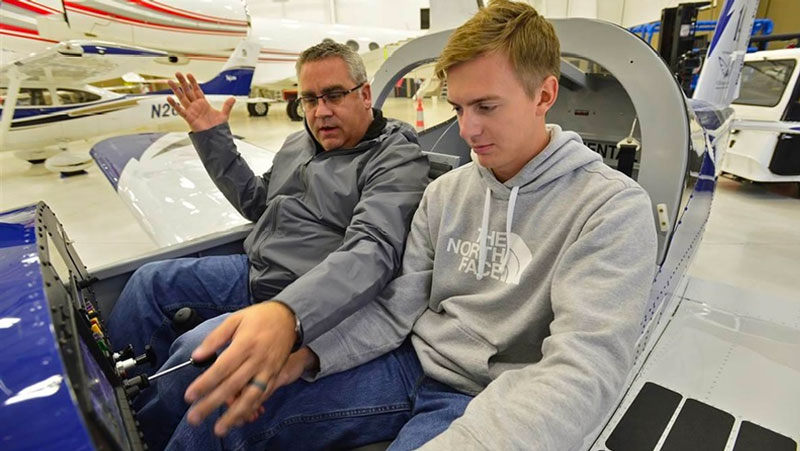
The U.S. Department of Transportation’s (DOT) Federal Aviation Administration (FAA) has announced a proposed rule that would continue the safe integration of Unmanned Aircraft Systems (UAS), (also commonly called drones), into the nation’s airspace by requiring them to be remotely identifiable.

“Remote ID technologies will enhance safety and security by allowing the FAA, law enforcement, and Federal security agencies to identify drones flying in their jurisdiction,” explained U.S. Transportation Secretary Elaine L. Chao.
The FAA seeks input on the Notice of Proposed Rulemaking (NPRM) for Remote Identification (Remote ID) of UAS in the Federal Register, which is accompanied by a comment period which closes March 2, 2020, to receive public feedback and help the FAA develop a final rule to enhance safety in the skies over the U.S.
“As a pilot, my eye is always on safety first,” said FAA Administrator Steve Dickson.

“Safety is a joint responsibility between government, pilots, the drone community, the general public and many others who make our nation so creative and innovative.”
Drones are a fast-growing segment of the entire transportation sector – nearly 1.5 million drones and 160,000 remote pilots are registered with the FAA.
Equipping drones with remote identification technologies would build on previous steps taken by the FAA and the UAS industry to safely integrate operations.
These steps include the small UAS rule, which covers drones weighing less than 55 pounds, and the Low Altitude Authorization and Notification Capability (LAANC), which automates the application and approval process for most UAS operators to obtain airspace authorizations.

These efforts lay the foundation for more complex operations, such as those beyond visual line of sight at low altitudes, as the FAA and the drone industry move toward a traffic management ecosystem for UAS flights separate from, but complementary to, the air traffic management system.
The proposed Remote ID rule would apply to all drones that are required to register with the FAA (recreational drones weighing under 0.55 pounds are not required to register), as well as to persons operating foreign civil UAS in the U.S..
(Remote ID is a big deal for Part 107 operators and hobbiest. Make sure you fully understand it and share your comments with the FAA! Courtesy of RemotePilot101 and YouTube. Posted on Dec 31, 2019.)
Learn More…

Pictured here, Phillip Campbell familiarizes a Van’s Aircraft RV-12 cockpit with McKinney High School student Bryan Soltys-Niemann during an aviation class at McKinney National Airport in McKinney, Texas, Nov. 8. (Courtesy of Facebook, AOPA, and Mr. David Tulis.)
January 9, 2020 – In Breaking News – AOPA .org
Initial feedback on the drone identification and tracking notice of proposed rulemaking was decidedly negative.
Many if not most of the first 1,000 comments voiced concern about remote pilot privacy, new limitations on where and how drones can be flown, and financial costs both known and unknown.
The FAA set a March 2 deadline for public comment.

AOPA Director of Regulatory Affairs Christopher Cooper said the association’s analysis of this notice of proposed rulemaking is ongoing, and the association will weigh in on specifics once the details of what the FAA has put forward are fully understood.
Cooper said feedback from members will also inform the association’s positions, and more time may be needed to allow all stakeholders to fully digest and understand FAR Part 89, the new regulation the FAA seeks to create while amending others. (AOPA invites those who submit comments to copy the association via this email address when submitting.)
“We plan to carefully review this very important proposed rule to determine all of the potential impacts to both our manned and unmanned members,” Cooper said.
“Meanwhile, at first glance, this proposed rule is a step in the right direction toward further integrating UAS safely into the National Airspace System, while also providing tools to protect the public from nefarious and reckless operators.”
“However, you can expect we will have much more to say in the weeks ahead on how the FAA can improve this proposed rule.”

The short version
-
The FAA seeks to require all drones larger than 0.55 pounds (250 grams) to be individually registered and to broadcast identifying information in order to fly in most locations;
-
The FAA has made clear that Remote Identification (RID) is a prerequisite for a long list of advanced operations being allowed without waivers, including routine drone flights at night, over people, and beyond the remote pilot’s line of sight;
-
A system to track and remotely identify drones is the key to creating a new unmanned aircraft traffic management (UTM) system, and the details of exactly how this new system is implemented remain to be decided.
-
The FAA is leaving much of this to private industry, creating performance standards without dictating how they are achieved;
-
-
Nothing is going to change soon: The proposed rulemaking calls for various requirements to be phased in over three years, and the details, including that timing, can still be changed prior to publishing of the final rule;
-
With very few exceptions, the FAA proposes that virtually every unmanned aircraft in the airspace (at any altitude) must be quickly identifiable by other users, and law enforcement, which will have access to the pilot’s location information as well as the aircraft’s location.
-
Those unable or unwilling to participate, no matter what credentials the operator may hold, will be relegated to flying only in federally approved, designated areas called FAA-recognized identification areas (FRIA).
-
(The FAA expects existing locations designated for flying traditional radio-controlled model aircraft will be among the first FRIAs approved.)
-
Bad actors drove the rule
The FAA announced that RID was coming in March 2017, and assembled a committee of stakeholders (including AOPA) to provide recommendations on how best to minimize the downsides of drones and maximize the opportunities—delivery of food and medicine, infrastructure inspection at a fraction of the cost of other methods, disaster response, and scores of others.
The aviation rulemaking committee report was published in December 2017, though some of the 74 members submitted dissenting views on some key points.
Continue reading…
Learn More…
(After nearly 4 years, the FAA has finally released their plans to require Remote Identification on all drones and RC Aircraft. This video summarizes it for you, so you can submit your comments to the FAA before March 1st. Could this be the end of the hobby? I hope not. Courtesy of 51 Drones and YouTube. Posted on Dec 28, 2019.)
AST strives to meet a 3 STAR trustworthiness rating, based on the following criteria:
- Provides named sources
- Reported by more than one notable outlet
- Includes supporting video, direct statements, or photos

















